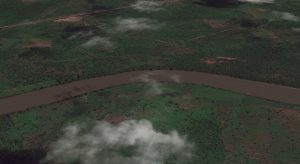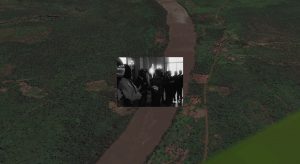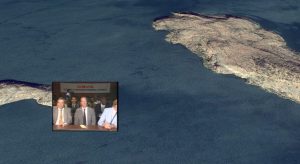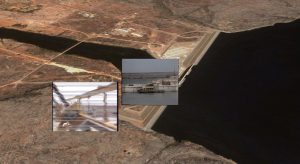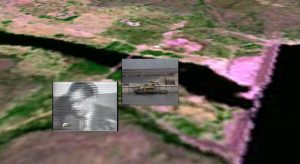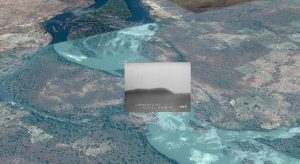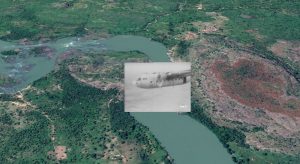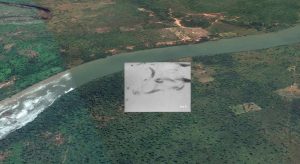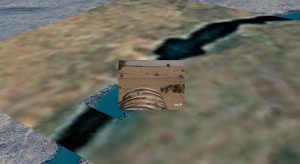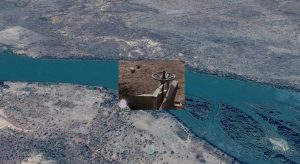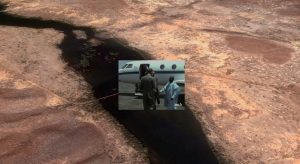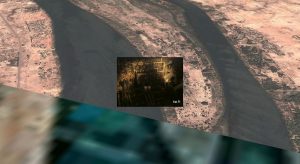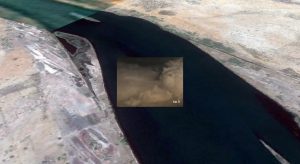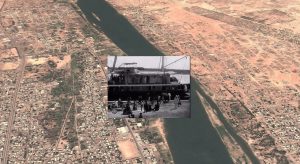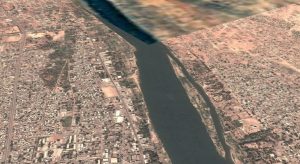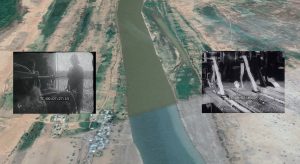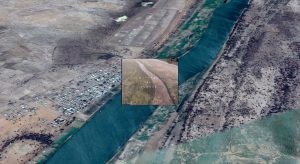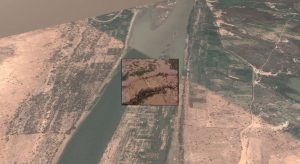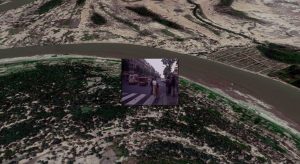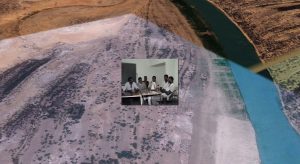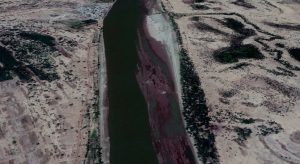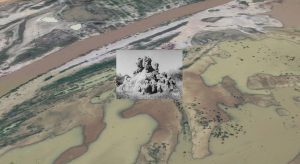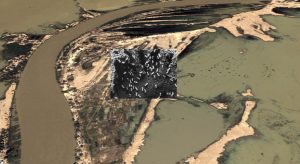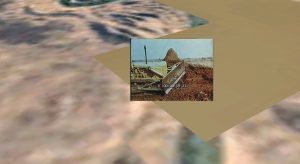The River And The Desert
(50)
The River and the Desert is an assemblage of colonial film archives, INA archives, satellite imagery and aerial photography from 1966 to 2016 and others, on infrastructures of soil, data, bodies, water and seed extraction along the Senegal River. The video can be presented in exhibition or as support for a lecture peformance.
Satellite imagery (DigitalGlobe, GeoEye, Nasa, Landsat) and aerial photography in Geographic Information System, Google earth, vectorisation following the Senegal River from the Manantali Dam to the Senegal River estuary
The switch of satellite images from one season or a year to another during the viewing reveals the gardens of the rainy season, the floods, the droughts and desertification processes. This part of the Sahel region suffers from reinforced drought or the raise of intense precipitation that can accelerate desertification and erosion.
Ina Archive on the Manantali Dam and the OMVS [Senegal River Basin Development Authority], 1982
The OMVS (Organisation pour la Mise en Valeur du Fleuve Sénégal) is an organisation, grouping Guinea, Mali, Mauritania and Senegal for the purpose of jointly managing the Senegal River and its drainage basin. The ancestor of the OMVS is the Agricultural Colonization Plan of Senegal that implemented a “Jardin d’essai” for the development of cash crop plantations and planed a hydroelectric dam in the 1920s and 1930s that never got built. In 1963, the OMVS carried out anew, with the support of the United Nations Development Programme, the construction of dams to produce electricity and to irrigate. The Manantali and Diama hydroelectric dams built in the 1980s had negative results on the environment and human health, and limited ones for irrigation. Nowadays, a navigation project is being develop between the city of Kayes and St Louis. The OMVS continues its mega infrastructure politics without trying to adapt to the needs and scale of subsistence agriculture.
Ritorno al Fleuve [Return to the River]
1986 , 5’ (extracts)
A film by Gao Cooperazione Internazionale and Ada Cavazzani
Production: University of Calabria, Centro Radio Televisivo, Istituto Italo Africano Roma
The film documents groups of migrants supporting or founding farming projects along the Senegal River. It includes an interview with Bathily Bakhoré from the cooperative of Somankidi Coura.
Ina Archive on the Sahel drought of 1974/1974
News on the Sahel drought shows NGOs’ food distribution programme by trucks and planes while french militaries experiment cloud seeding geoengineering with silver iodide over Sahel.
Géographie – Afrique Occidentale Française / Zone soudanienne / Le Haut Sénégal
1909, 3’ (Extract)
Gaumont Pathé Archives 1920PGHI 00461
The village of Samé, across from the cooperative of Somankidi Coura, was founded in 1906 on the Diakhandapé sisal plantation during the colonial period, to accommodate forced from Haute-Volta. After independence, a Rural Group (state cooperative) was built on its ruins. Under the dictatorship, this was turned into an agronomic training center. The UNDP (United Nations Development Programme) invested a few years there. Fula herdsmen and their livestock cross the ruins to reach the river, using some of them as enclosures. Temporary farm workers find refuge there for the season. The ACTAF members of Somankidi Coura were given land on the other side of the river.
A 1919 colonial propaganda film entitled Géographie [Geography] contains a few shots of the Diakhandapé sisal plantation, across the current cooperative. The film inspects regions of French West Africa the way one inspects subordinate troops, or components of an assemblage before creating a montage, going from picturesque sites and local festivities to industry and transport infrastructures, in order to promote the “modernizing mission” of the colonial project. A panoramic shot shows an expanse of agave crops. A tractor conspicuously passes in front of the camera, then shots of the painful, barehanded harvest, the drying and defibration of the plant by forced laborers. The inter-titles reinforce the already palpable intentionality of the shots.
La ficelle pour moissonneuse lieuse
Date unknown (1920’s), 4’ (Extract)
Gaumont Pathé Archives PR 1924 52 1
The sisal seeds were imported to Africa from Mexico by German and French biologists in the late nineteenth century. After being dried and defibrated, the sisal from the plantation was sent to Saint-Louis by river, or to Dakar by train, then turned into rope by laborers in factories in The Havre. Another film by Pathé, La ficelle pour moissonneuse lieuse, taking the same approach to describing a production process, revealed the female laborers’ working conditions, which were similar to those of the plantation’s forced laborers.
Pathé-Gaumont, that owned the most significant French colonial film archive, charges a fee of 200 € per min. (for use of footage longer than 5 min), or 300 € per min. (for use of footage less than 5 min), for the right to show archival material without time code.
Related Text
FUGITIVE REMAINS:
Soil, Celluloid, and Resistant Collectivities
By: Sheikh, Shela; Gray, Ros; Wolf, Nicole; César, Filipa; Grisey, Raphaël and Touré, Bouba
In: The Empire Remains Shop
By: Raphaël Grisey
In: Sowing Somankidi Coura: A Generative Archive
Producer
Raphaël GriseyProduction Location
Norway, Germany, Mali, SenegalRelated Publication
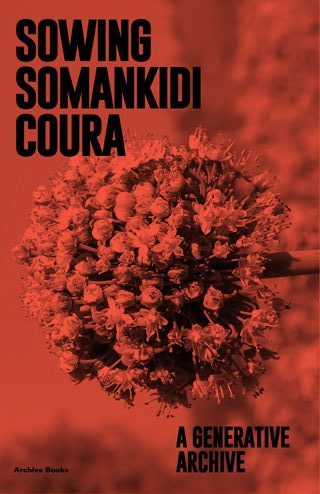
Sowing Somankidi Coura
A Generative Archive
2017
Archive Books

Second Yinchuan Biennale:
Starting from the Desert. Ecologies on the Edge
2018
Mousse publishing
Work Presentations
-
Lundi de Phantom n°20 : Raphaël Grisey
Raphaël Grisey and Bouba TouréLes Lilas
14 December 2015Screening and discussion
The River And The Desert

Still from The River And The Desert
Still from The River And The Desert
